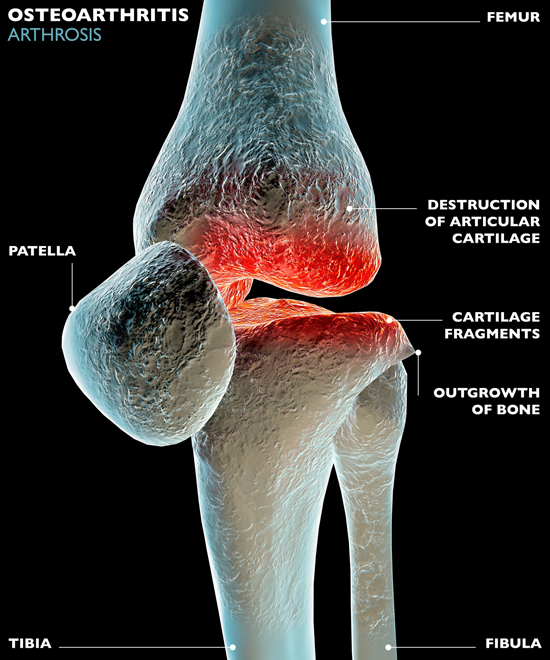Senior Citizen Help: Hips, Knees, and the Aging Process
Maintaining our mobility is one of the most important factors in maintaining independence as we age. Understanding your joints may help you keep them in working order.
Many factors can influence our mobility, particularly our joints and muscles and our balance. Our skeletal system is the scaffolding of our body, providing structure and support. Joints are the parts of the bodies where different bones come together, allowing our skeletons to move. Healthy joints contain cartilage, synovial membranes, and synovial fluid that provide cushioning.
As we age, joints can be affected in a number of ways. Our bones lose mass and become more brittle and prone to fracture. The fluid content diminishes and the cartilage can wear away. Mineral deposits or calcifications can develop around the joints, restricting movement and causing pain. The symptoms experienced by these changes and the problems that occur with age are different for each joint—and for each senior citizen. Help yourself by understanding how your joints work.
Knees and Hips
The knee is the strongest and largest joint in our body and bears the burden of the majority of our body weight. The end of the femur (or thighbone), the tibia (or shinbone), and the patella (or kneecap) meet in the knee joint. Articular cartilage cushions the bones as the knee bends and straightens. Two other pieces of cartilage, called the meniscus, provide cushioning between the ends of the femur and tibia. The entire joint is surrounded by a synovial membrane that secretes a fluid that lubricates the joint.

Osteoarthritis, where the cushioning cartilage wears away and creates bone-on-bone friction, is the most common knee-related affliction.
The most common knee problem in the elderly is osteoarthritis of the knee. In osteoarthritis, the cushioning cartilage wears away to varying degrees, resulting in bone rubbing against bone.
Much like the knee, the most common hip affliction in the elderly is caused by osteoarthritis, or “wear and tear” arthritis. Hip fractures, however, can also occur in older people, and the risk of having a hip fracture increases with age as well as with other medical conditions like osteoporosis, cancer, and a history of long-term steroid use. Hip fractures can have serious consequences for any senior citizen. Help and medical attention should be immediate.
The hip is another of the body’s largest joints, but unlike the knee, it is a ball-and-socket joint. The “ball” is the head of the femur (thighbone) and the socket is the surface of the pelvic bone called the acetabulum. As with the knee, the bony surfaces of the joint are covered by a cushioning articular cartilage and the entire joint is surrounded by a lining that secretes a lubricating fluid. When this cushioning cartilage begins to degenerate, the symptoms of hip osteoarthritis begin to appear.
Symptoms
- Pain: This can range from a mild ache to debilitating pain. Some people report feeling more pain with changes in the weather or vigorous activity.
- Swelling and Stiffness: Some people experience this most after sitting or resting.
- Crepitus: A click or creak of the joint can sometimes be heard from loose pieces of cartilage in the joint.
Treatment
- Muscle-strengthening exercises: Your doctor or physical therapist can help you determine what exercises you can do to help strengthen the muscles that support your knee or hip joint.
- Modify your workout: Switching from high-impact exercise like jogging to low-impact exercise like swimming or cycling reduces the stress on your knee.
- Weight loss: Lowering the burden of weight that your knees and hips must bear can have a significant impact on pain reduction and increased mobility of the joint.
- Medications: Non-steroidal anti-inflammatory drugs (NSAIDs) are often used to treat the pain and inflammation of arthritis, but they can have serious risks including gastrointestinal bleeding, so you should consult your doctor before taking them.
- Joint replacement: Joint replacement is the treatment of choice when all other treatment options have failed.
Originally published in May 2016 and updated.


 MGH Study: Hot Yoga May Help Ease Depression Symptoms, but Be Mindful of Health Concerns
MGH Study: Hot Yoga May Help Ease Depression Symptoms, but Be Mindful of Health Concerns  Ramsay Hunt Syndrome
Ramsay Hunt Syndrome 
Chronic hip pain may necessitate hip replacement. Several options exist, among them minimally invasive approaches.
© Puwadol Jaturawutthichai | Dreamstime.com